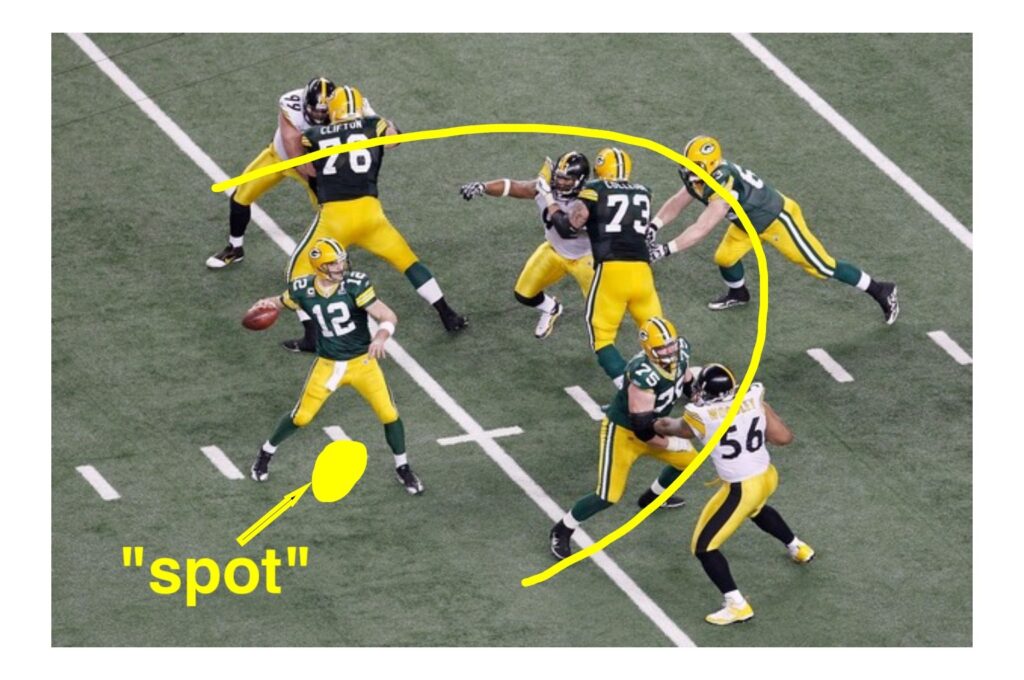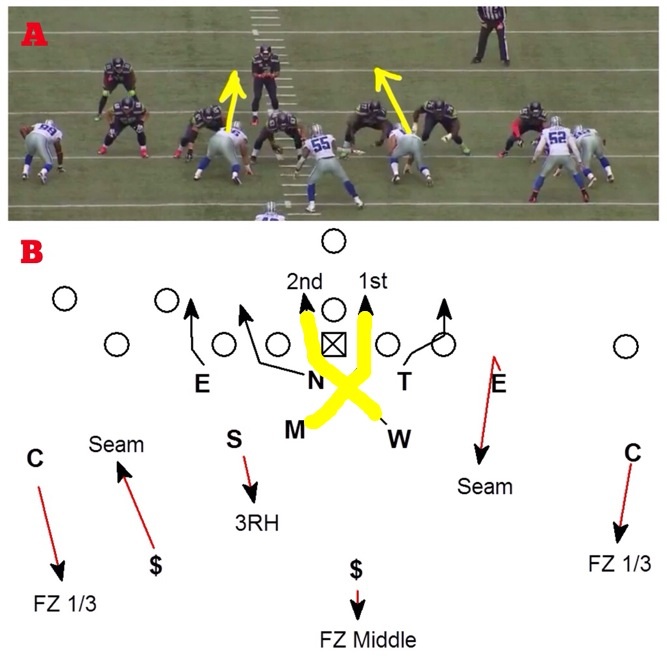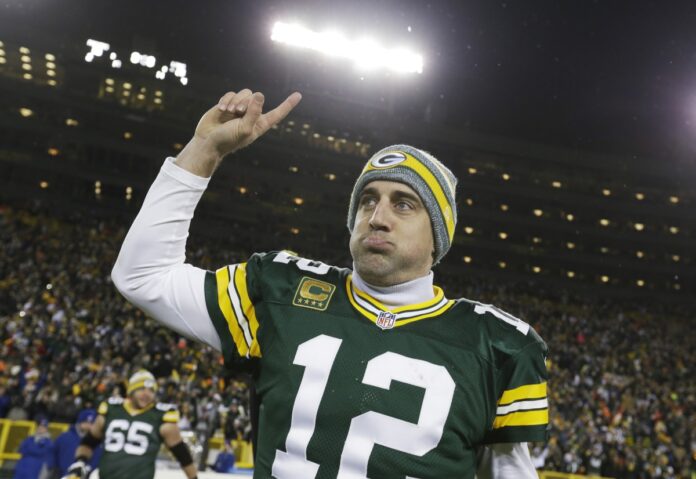Aaron Rodgers’ Injury & the Effect on Green Bay’s Game Plan
Dallas Cowboys quarterback Tony Romo dropped back to pass, and as I settled into my zone assignment, I noticed Romo and tight end Jason Witten in my peripheral vision.
Witten initiated a deceptive jab-fake to the outside, and with the assurance of over-the-top coverage, I instinctively anticipated an out-route. As I committed to the out-route, Tony executed a convincing pump fake.
In the blink of an eye, Jason Witten expertly executed an out-and-up double move. Reacting swiftly, I planted my left foot, intending to follow his route, when I felt an unexpected twinge in my calf.
It was a sudden SNAP that sent a shock through my body. Uncertain whether I had ruptured my Achilles or injured my calf, I raised my left leg to inspect the crucial tendon.
Fortunately, my Achilles remained intact, but it was evident that my calf had sustained the injury.
This type of injury frequently occurs in sports involving rapid changes in direction and sharp cuts, much like the one Green Bay quarterback Aaron Rodgers suffered four weeks ago against the Tampa Bay Buccaneers.
Astonishingly, he faced a similar situation against the Detroit Lions the following week. Initially, Rodgers believed that he had ruptured his Achilles – a sensation uncomfortably identical to mine.
As a result, he was escorted off the field on a cart. However, upon thorough medical examination, it was established that Rodgers had not torn his Achilles, and he made a triumphant return to the field, ultimately leading his team to another NFC North championship.

Upon his return, Rodgers had to adapt his style of play significantly. Gone were when he could rely on quickness and athleticism to elude the rush and extend plays from the pocket.
Rodgers transformed into a bona fide pocket passer, much akin to the likes of Tom Brady and Peyton Manning, where mobility was kept to a minimum.
To maintain his effectiveness, Rodgers had to ensure his throws were precisely timed and synchronized with his receivers.
He managed to produce even when anchored in the pocket with minimal movement, tallying 226 yards and two touchdowns.
As Wednesday rolled around, and with Rodgers still absent from practice, taking my own experience into account, it was apparent that the potential limitations stemming from Aaron’s calf injury would need to be considered in the game plan for Sunday’s divisional playoff showdown against the Cowboys.
Even two weeks after his last game, Rodgers remained susceptible to re-injury. The soreness would persist because a mere two weeks were insufficient for the muscle to recuperate fully.
How does one construct a defensive game plan when facing a quarterback who opts for reduced mobility and relies more on precisely timed routes?
In passing situations, the foremost objective is to disrupt the quarterback’s comfort zone, often called the “spot.”
This spot, roughly six yards behind the center, is where the offensive line forms the pocket and where all quarterbacks find their sanctuary for executing plays.

If the quarterback remains unpressured and undisturbed in his designated spot, he can adjust his footing, bide his time, and systematically dismantle the defense.
Should his initial comprehensive receiver option be covered, the quarterback can patiently wait, granting his receivers the opportunity to break free.
From a defensive perspective, the primary objective is evident: apply relentless pressure on a quarterback like Rodgers, who grapples with limited mobility.
In doing so, he might be coerced into engaging in actions that could aggravate his calf injury, potentially forcing him out of the game.
So, what strategies can the Cowboys employ to dislodge Rodgers from his comfort zone?
Firstly, a straightforward yet robust interior push can compel him into a frantic scramble, with the critical element being an individual capable of breaching the offensive line.
Alternatively, employing various line stunts can offer an alternative approach to disrupt the quarterback’s spot and induce movement.
The defensive end, stationed on the outside, can swiftly drive inward to penetrate, while the defensive tackles position themselves outside to maintain containment.
As a final option, pressuring the quarterback directly from the linebacker level by targeting the A gaps can serve as a strong visual cue for Rodgers.
He’ll find himself confronted with pressure in his vicinity, compelling him to make a swift decision on whether or not to abandon the pocket.
Given Rodgers’ lingering calf discomfort, the Dallas defense must emphasize getting him on the move.

The Packers’ game plan will likely mirror their approach against the Lions in Week 17, emphasizing minimizing bootlegs and rollouts, which Rodgers typically excels at.
Instead, there may be a cautious deployment of one controlled, moving-pocket play early in the game to gauge how Rodgers’ calf responds to throwing on the move.
This approach allows for better control of the outcome, as opposed to discovering how he handles these movement-based plays under duress.
Short, quick-timing routes, including slants, outs, and back shoulder throws, are expected to be the predominant passing patterns.
The running game, led by Eddie Lacy, will assume a pivotal role, with Coach Mike McCarthy directing his play-calling focus toward the ground attack.
Green Bay has demonstrated effectiveness in running the ball against a wide array of defenses, even against the Lions, who boasted the league’s top-ranked run defense. In that particular matchup, the Packers managed to amass 152 rushing yards.
By establishing a successful ground game, Rodgers can employ play-action passes to deter the rush, thereby reducing pressure from the Cowboys’ defensive linemen and minimizing the likelihood of him needing to stray from his comfort zone before releasing the ball.
Undoubtedly, Rodgers’ calf condition will loom in this high-stakes divisional-round playoff game. Both the Cowboys and the Packers will craft their strategies with a keen eye on this pivotal variable.
As is customary in the NFL, the team that can execute its game plan most effectively will emerge as the victor in this crucial showdown.

